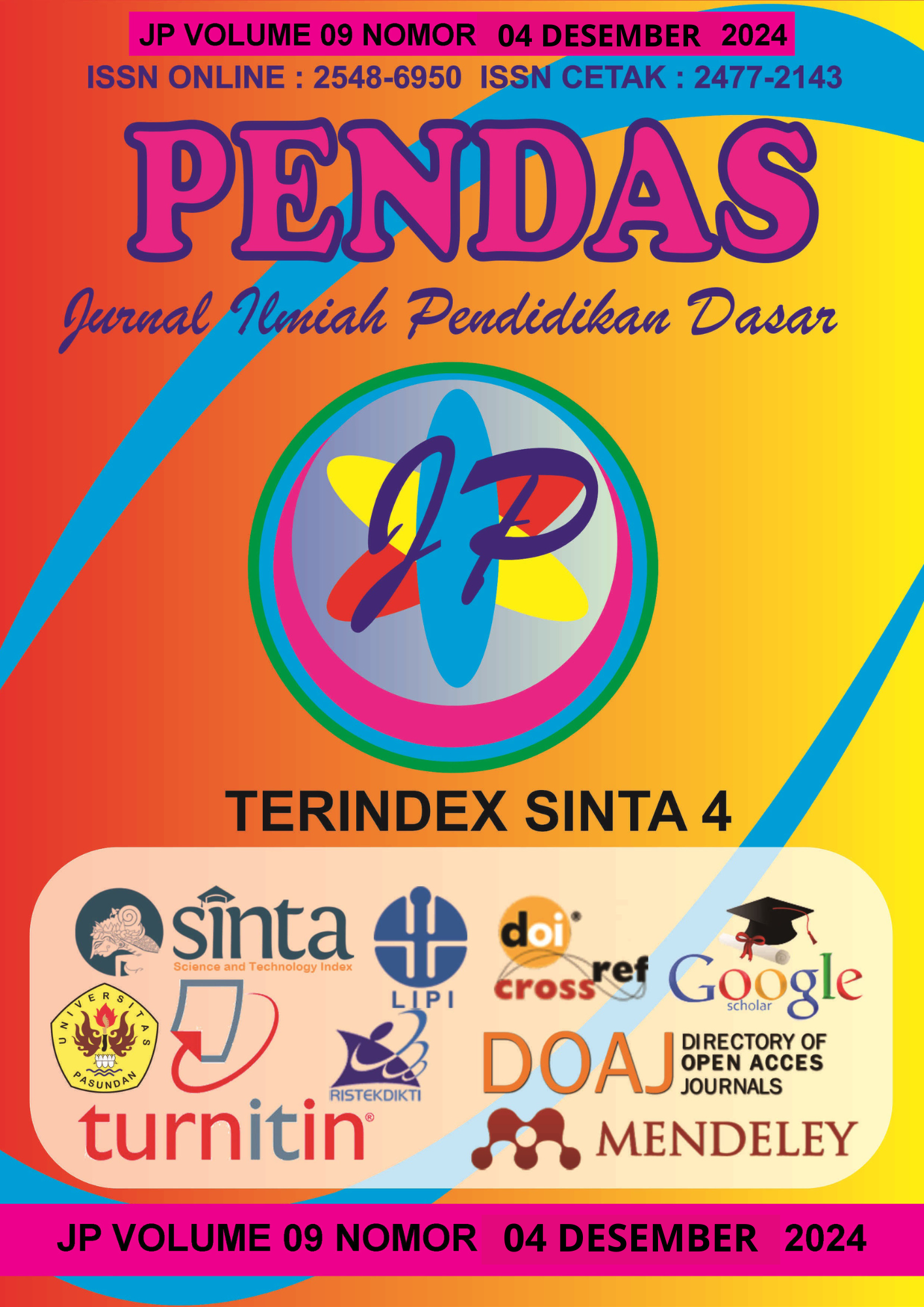PENINGKATAN HASIL BELAJAR MATEMATIKA PENGUKURAN SUDUT MELALUI MODEL PROBLEM BASED LEARNING DENGAN MEDIA JAM SUDUT PADA PESERTA DIDIK KELAS V SD
Keywords:
Problem Based Learning (PBL), Angle Clock, Learning OutcomesAbstract
This research is motivated by the low learning outcomes of fifth grade students of Beskalan No. 14 Surakarta Elementary School. Therefore, a learning model and media are needed to improve learning outcomes and understanding of angle measurement material. The purpose of this study is to improve mathematics learning outcomes of angle measurement material for fifth grade students of Beskalan No. 14 Surakarta Elementary School using the Problem Based Learning (PBL) model and angle clock media. This research is a Classroom Action Research (CAR) consisting of 2 cycles, each cycle is a series of activities each consisting of 4 stages, namely planning, implementation, observation, and reflection. The subjects in this study were 14 fifth grade students of Beskalan No. 14 Surakarta Elementary School consisting of 8 male students and 6 female students. To determine the implementation of Mathematics learning of angle measurement material using the Problem Based Learning (PBL) model with angle clock media. From the 2 cycles, the first cycle obtained 6 students who completed and 8 students had not reached the Minimum Completion Criteria (KKM). The second cycle obtained an increase to 100% of students who completed their studies. From the research that has been done, it can be concluded that the use of the Problem Based Learning learning model with the angle clock media can improve student learning outcomes in Mathematics learning on angle measurement material for grade V students of Beskalan Elementary School No. 14 Surakarta. In addition, student learning is more meaningful, making students learn to better understand the angle measurement material based on the results of their learning experiences, fun, active and enthusiastic.
Downloads
References
Ardiyanto, P. (2022). Peningkatan Hasil Belajar Matematika Materi Pengukuran Sudut melalui Model Pembelajaran Problem Based Learning (PBL) di Kelas IV SD N Bandung Tahun Ajaran 2020/2021.
Arikunto, S. (2013). Prosedur Penelitian Suatu Pendekatan Praktek.
Binangun H. H.& Hakim, A. R. (2016). Pengaruh Penggunaan Alat Peraga Jam Sudut terhadap Hasil Belajar Matematika.
Destrinelli, Dwi kurnia Hayati, dan E. sawinty. (2018). Pengembangan media konkret pada pembelajaran tema lingkungan kelas III sekolah dasar.
Desyandri, D., & Finoriya, I. (2020). (2020). Penerapan Model Project Based Learning untuk Meningkatkan Hasil Belajar Seni Musik Pada Pembelajaran Tematik Terpadu di Sekolah Dasar.
Fauziah, R. (2015). Penerapan Model Pembelajaran Problem Based Learning untuk Meningkatkan Proses dan Hasil Belajar Operasi Hitung Siswa SD.
Hamzah, A. dan M. (2014). Perencanaan dan Strategi Pembelajaran Matematika.
Hosnan, M. (2014). Pendekatan Saitifik dan Kontekstual.
Janah, F. N. M., Sulasmono, B. S., & Setyaningtyas, E. W. (2019). Peningkatan Hasil Belajar Matematika Melalui Model Pembelajaran Problem Based Learning Berbantuan Media Video Siswa Kelas IV SD.
Kurniasih, I. & B. S. (2015). Ragam Pengembangan Model Pembelajaran Untuk Peningkatan Profesionalitas Guru.
Mayasari, N., Junarti, Puspananda, D. R., & Amin, A. K. (2019). Pemanfaatan Media Pembelajaran Jam Sudut Dalam Pembelajaran Matematika Di Sd.
Riyanto, yatim. (2010). Paradigma baru pembelajaran.
Rusman. (2013). Model-Model Pembelajaran.
Triyanto. (2011). Model-model Pembelajaran Inovatif.
VanCleave, J. (2003). Matematika untuk Anak.
Downloads
Published
Issue
Section
License
Copyright (c) 2024 Pendas : Jurnal Ilmiah Pendidikan Dasar

This work is licensed under a Creative Commons Attribution 4.0 International License.



















